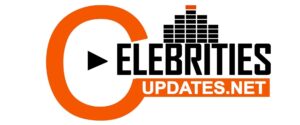When looking to refinance your mortgage, it can be difficult to know where to begin. There are so many different lenders and products to choose from, which one will give you the best rate on your mortgage?
The answer might surprise you. If you’re planning on refinancing your mortgage, you should consider working with a banker who knows Mortgage Banker. If you have experience working with mortgage bankers, they can often work out better rates for you.
The best thing is that getting a better rate on a mortgage doesn’t even require much work on your end. In most cases all that’s required is some research, a little bit of patience, and some hard work on your part!
Here are some things to keep in mind when looking to get the best rate on a mortgage.
Get a Good Credit Score
The first thing you’ll want to do is get a good credit score. This is essential because it will determine how flexible your lender will be with their loan approval process.
If they can’t easily approve a loan for you, you may find yourself with higher monthly payments than you’re comfortable with. You don’t want this to happen. If you need help with your credit score, it’s important to remember that every little bit helps.
If you didn’t owe a penny months ago, adding one dollar on each of the accounts you have will likely improve your credit score by a few points. This process is called “freezing” your accounts and can help protect your credit score.
Establish Your Repayment Options
Once you’ve gotten a good credit score, your next step is to establish your repayment options with your lender. The first option is a “traditional” loan. A traditional mortgage lets you make payments for 30 years.
You can also ask your lender about “jumbo” loans and other special terms that let you stretch out your payments over a longer period of time. There are a few things to keep in mind when it comes to establishing repayment options.
First, make sure you can afford to make the payments on a regular schedule. If you have to miss a payment or two every so often, it might be worth it to you to temporarily drop your interest rate and pay off your loan faster.
A better approach would be to look at your actual income and expenses and determine if you can afford to pay your loan off in full. Whatever your repayment plan is, make sure it’s realistic. If you can’t afford to repay your loan in full, your lender will probably charge you higher interest than they would if you made regular payments.
Don’t Be Afraid to Negotiate
Negotiating on a mortgage can be difficult, but it doesn’t have to be messy. In fact, when you get right down to it, negotiating is just a couple of phone calls away.
That’s why it’s important to be prepared when it comes to discussing your mortgage. Before the conversation gets complicated, you can usually start by telling your lender that you want to start the negotiation process on a lower level.
This usually gets them down to business. If you’re in a position where you need to refinance your mortgage, remember that you can always lower your interest rate. Look into refinancing your mortgage and seeing what your cash-out option is.
There are many refinance programs where you can get a lower rate on a new mortgage.
Get Preapproved For a Mortgage
Now that you know where to start, it’s time to get preapproved for a mortgage. Begin by reading up on the different mortgage loan programs available from your chosen lender.
Once you understand the different options, it’s time to contact different lenders and request a financing estimate. This estimate will help you understand how long it would take each lender to complete the loan.
You can also schedule a call with a few of the different lenders and see what your options are. It’s a good idea to give each lender a little bit of notice when you’re interested in their product.
This gives you some time to look into their business practices and get a feel for what their process is like.
Look Into Conventional and VA Loans
An important part of any mortgage shopping process is looking into different types of loans. This is because each has its own set of rules and regulations.
Conventional loans are generally safe loans, but they have a set payment schedule and interest rate. VA loans follow the Servicemembers renaissance bill, which passed in 2014, which allows veterans to refinance their mortgages at a lower interest rate.
VA loans are generally more expensive than conventional loans, but they have got some perks that make them worth it.
Otherwise, when looking into VA and conventional loans, make sure you’re aware of all the fees and taxes that are associated with them. These can vary from lender to lender, so it’s important to do your research.
Look Into Equity Indenture and Collateralized Mortgage Programs (CMPs)
Other than a conventional loan, a few other things might seem like a good Idea in terms of refinancing your mortgage. One thing to keep in mind is that equity loan programs typically have higher interest rates than conventional loans.
Also, when refinancing your mortgage through a CMP, make sure that you are aware of the added fees and hidden taxes associated with the program. Both of these things can really complicates your refinance and can make your decision a little more difficult.
However, you can always try your best to get it right the first time.
Conclusion
Getting a mortgage is a big decision and can be nerve-wracking. There are so many different loan products and rates out there, it can be difficult to know where to start.
Here are a few things to keep in mind when looking to get the best rate on a mortgage.
















Discussion about this post